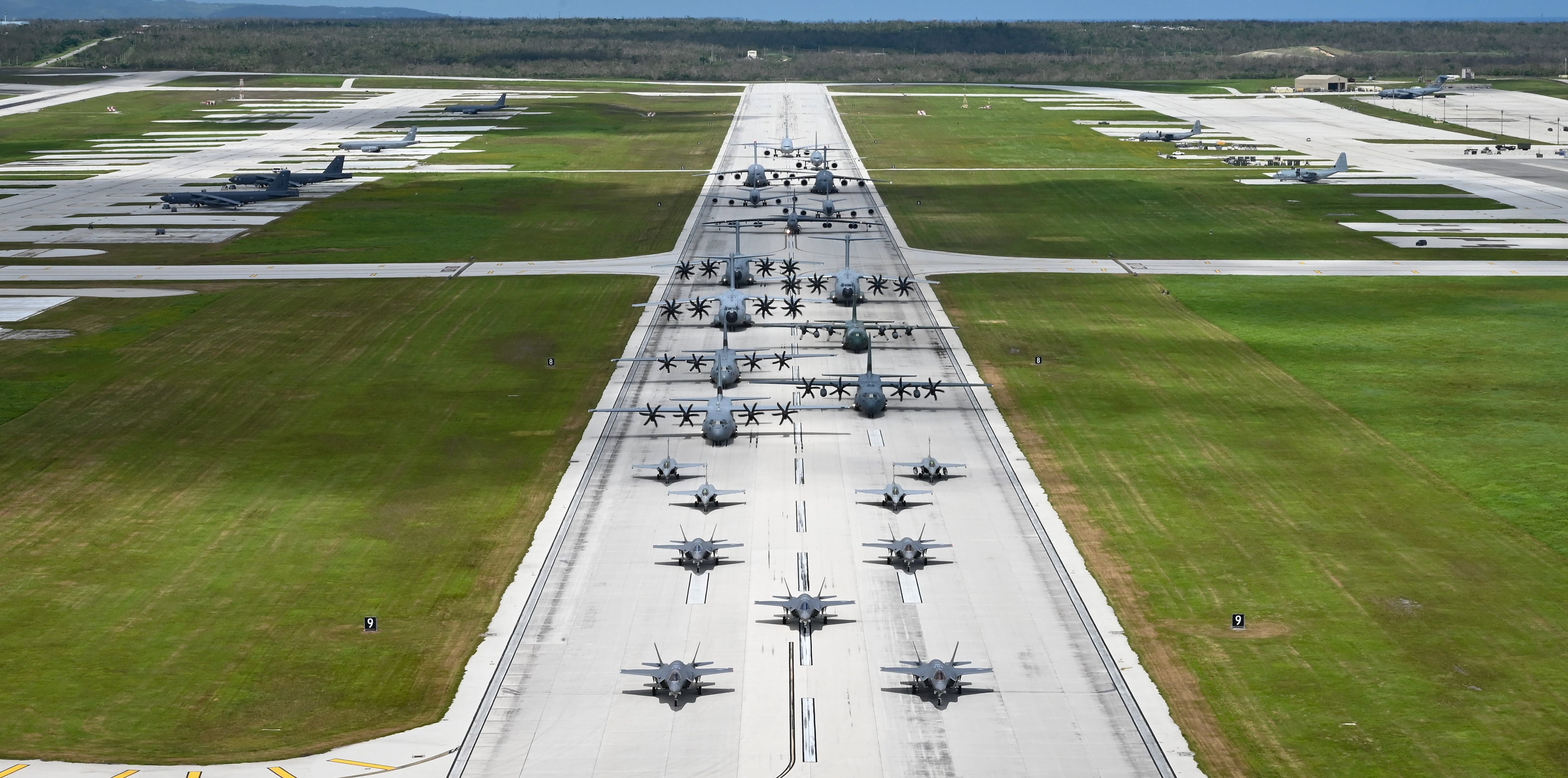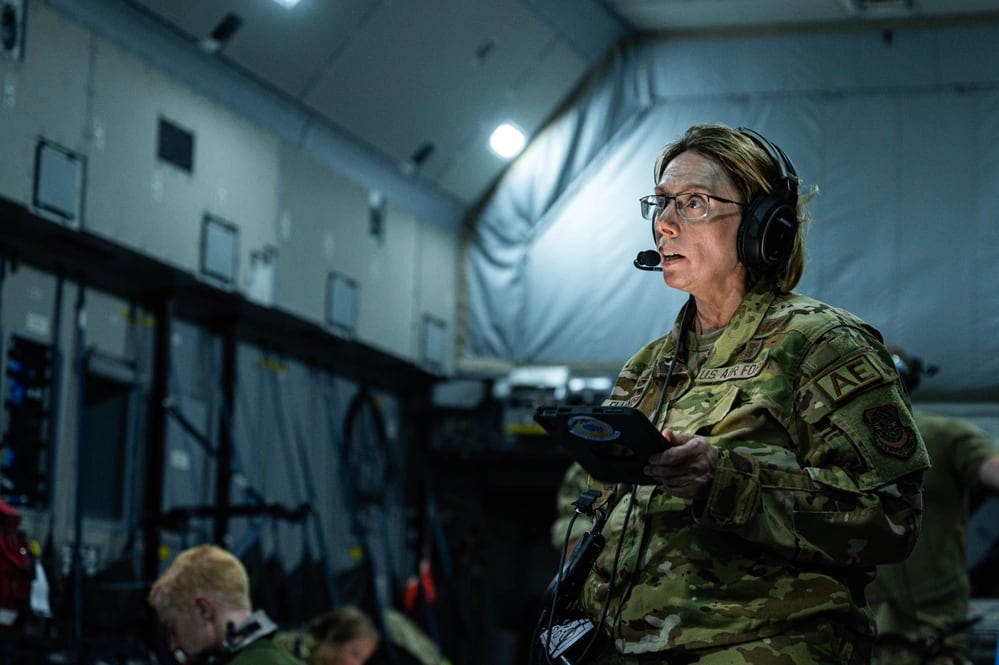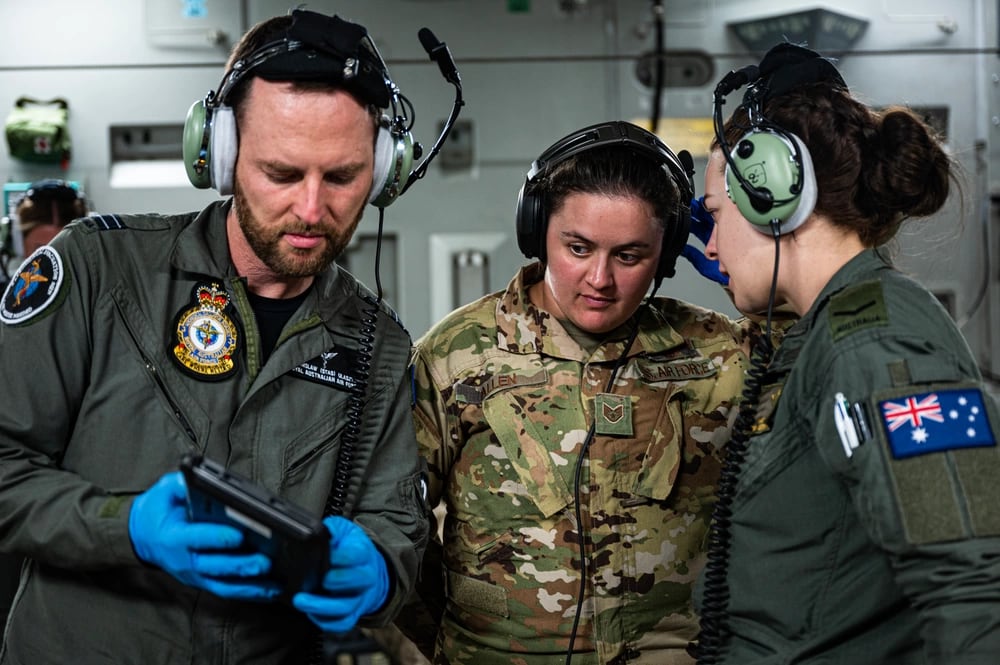ANDERSEN AIR FORCE BASE, Guam — The U.S. Air Force is rethinking how it would medically evacuate thousands of wounded American troops from the Pacific in a matter of weeks if the military sustained high casualties in a war with China.
Such a conflict would force the military’s flying ambulances to reckon with thousands of miles of open ocean, a lack of full-service health facilities and the logistical challenges of transporting and cooling medical supplies across the region, airmen told Air Force Times during a recent visit to Guam.
To save the lives of their fellow service members, they said, medevac units will need to fly longer, triage more injuries and illnesses in midair and work more closely with their international partners than ever before.
RELATED

“It’s the readiness factor, ensuring that we’re not just mission-capable [in] how we have been doing aeromedical evacuation as we always have,” said Lt. Col. Stephanie Ellenburg, who sets the standard for patient care across nearly three dozen medevac units as commander of the 375th Aeromedical Evacuation Squadron at Scott Air Force Base, Illinois.
“Are we truly getting ready [for] what potentially is out there?” she asked.
A new paradigm
Medics from the U.S. Air Force and six allied countries sought to answer that question last month at Mobility Guardian, the Air Force’s two-week, biennial training exercise for its airlift and aerial refueling units.
Their efforts will shape a new framework for aeromedical evacuation at Air Mobility Command, the branch of the Air Force that manages medevac units.
The initiative is part of AMC boss Gen. Mike Minihan’s push to transform his command for major operations in the Pacific, after the Pentagon named China as America’s top competitor in military strength, technology development and global influence.
Minihan warned airmen in a memo earlier this year to prepare for a potential war with China as early as 2025.

If the U.S. responds to a Chinese attack on Taiwan — the democratically self-governed island that maintains military and trade ties with the United States but is claimed by China — Air Force medics could face an onslaught of combat wounds and a limited number of aircraft on which to treat them.
The Center for Strategic and International Studies, a Washington think tank, has estimated that 6,900 to 10,000 U.S. troops would be killed, wounded or missing in a conflict with China. Those killed in action could comprise around half of the casualties.
“In three weeks, the United States will suffer about half as many casualties as it did in 20 years of war in Iraq and Afghanistan,” the think tank said in a Jan. 9 report.
That volume of casualties would put immense pressure on military medevac to carry as many troops to safety as possible.
Officials say that requires a shift in the Air Force’s current aeromedical evacuation enterprise, on which the military relies to move patients between major bases and hospitals around the globe.
In a typical medevac, troops would call for help and wait for air planners to assign medics and an aircraft to pick up a wounded or ill patient. But in the Pacific, vast distances and schedule demands — and potentially, combat losses — mean the coalition may not have the luxury of waiting for on-call units from nearby bases to arrive.
Reorganizing those teams can help. At Mobility Guardian, small medical crews armed with large backpacks of supplies traveled with airlift squadrons to respond to simulated emergencies on the spot. Airmen had to use their own judgment and prioritize treatment for those with the highest chance of survival, the Air Force said in a July 20 release.
That approach also helps keep missions moving if a unit can’t speak to troops on the ground or receive orders from higher headquarters.
The Air Force should be able to tack more airmen and equipment onto those basic teams, depending on the situation, Ellenburg added. For instance, a unit may need to pick up pediatric supplies or a respiratory therapist in Guam.
Aeromedical evacuation teams will also need to keep patients stable in flight for longer periods of time, as they hop between facilities that provide lower-level care on their way back to major military hospitals in the U.S., like Hawaii’s Tripler Army Medical Center. That will require airmen to balance the amount of equipment they carry on flights with the need to travel light on aircraft full of other cargo.

Those teams could start small and localized on aircraft like the C-130 Hercules cargo plane, which can land on austere outposts with dirt strips instead of full-fledged runways. Later, they could hand off patients to teams on faster C-17 Globemaster III airlifters, which have more room for people and supplies.
C-17s, seen as the gold standard for aeromedical missions because of their built-in power supply, lighting and square footage, could then ferry their patients to their final destination.
Working together
Ideally, Ellenburg said, the U.S. and its allies will standardize their teams, processes and lingo so that injured troops receive the same level of care, regardless of who picks them up.
That means American medevac teams need to be jacks of all trades like their foreign counterparts, and less beholden to checklists that can be thorough but cumbersome.
Interoperability is made easier when countries fly the same aircraft, like the C-17s the U.S. shares with Australia or the C-130s it has in common with Japan.
On a July 10 training sortie, American airmen joined their Australian counterparts on a Royal Australian Air Force C-17 to go through the motions of loading litter-bound patients onto the plane and checking their vitals in flight.

In the belly of the jet, medics wove multicolored tubes and cords through the skeletons of metal litter racks that would hold four patients — plastic dummies adorned with faux gashes and burns.
Four airmen, one for each handle on a litter, began the carefully choreographed steps to bring victims up the ramp: squat, lift, forward.
Leading Aircraftwoman Rachel Koch, an Australian medical technician, barked directions. “Prepare to rack. Rack!”
Two Australians and two Americans slid a patient into place on the shelf.
Staff Sgt. Audrey Allen, an American technician with the 375th AES, offered Koch tips to secure the patients as they strapped three other dummies to the floor.
“They’re very similar, but in learning the different team dynamics, it helps us understand how we’re going to integrate together if we’re going to fly AE missions together,” Royal Australian Air Force Flying Officer Alyssa Collins, officer in charge at the 3rd Aeromedical Evacuation Squadron, said in a public affairs video July 11.

Still, coalition air forces faced other logistical hurdles that may require further policy tweaks.
Some biomedical cargo was stuck on the flight line because of inspection processes that crews hadn’t anticipated, Ellenburg said. And units may have to find a way to support heating-and-cooling equipment so medicine doesn’t go bad in the field.
Ellenburg said Mobility Guardian highlighted the “struggles that it’s going to take” to redesign aeromedical evacuation, but praised the seven-member coalition’s effort to figure it out for a new generation of airmen.
“I’ve had the greatest opportunities to work with lots of different international partners,” she said. “Not all of our U.S. forces have. … It’s opening their eyes [to] really, truly, what we can do.”
Rachel Cohen is the editor of Air Force Times. She joined the publication as its senior reporter in March 2021. Her work has appeared in the Washington Post, the Frederick News-Post (Md.), Air and Space Forces Magazine, Inside Defense, Inside Health Policy and elsewhere.





